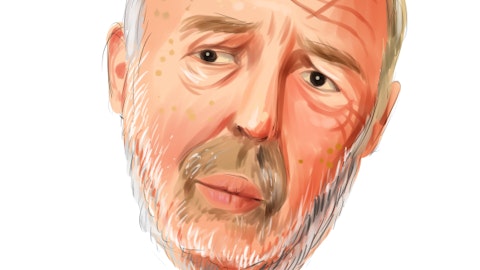David Deckelbaum: Thank you, Tom.
Operator: Your next question comes from the line of Josh Silverstein with UBS. Your line is open, Josh.
Josh Silverstein: Hi. Thanks. Good morning guys. Just sticking with the Marcellus, the realizations have been pretty strong this year, and even better than the corporate realizations. I know some of this is from the NYMEX and fixed price contracts that you guys have. You outlined what you have for the rest of the year. Can you just provide us a little bit of insight as to what you guys have next year? And any thoughts on kind of what you can do for locking in strong basis relative to what the forward curve may be? Thanks.
Blake Sirgo: Yes, Josh, this is Blake. I will take that one. We don’t really see a change going from ‘23 to ‘24 in our portfolio. We are expecting to realize about 85% of NYMEX this year. That is driven by a big portfolio that’s anchored to a lot of out-of-basin indexes that give us exposure to strong pricing in the winter, and also a lot of NYMEX pricing built in there. So, we don’t see a big change from ‘23 to ‘24 and how that portfolio is managed.
Shane Young: And I would just say, even though the second quarter and third quarter, that realization is a little lower, if you look year-to-date, that’s right about where we are tracking year-to-date.
Josh Silverstein: Alright. Yes. Thanks for that. And then just on managing the cash balance, I think Tom, you said you wanted to have about $1 billion of cash on hand. Can you just talk about the flexibility in this? I think you still plan on paying down the third quarter maturity next year with cash. But could this cash also be used to support shareholder returns potentially above 100% of free cash flow if crude oil and natural gas prices move lower? Thanks.
Tom Jorden: Yes. I will jump on to Josh for a second here. So look, on the cash balance, again, if you look back over the last, let’s call it, 1.5 years or seven quarters, it’s sort of been between call it, maybe a little over $600 million, a little below $1.5 billion. So, we sort of gravitated around that $1 billion balance. I think we do want to be able to be countercyclical with regards to shareholder returns. So, if we are in a period like the second quarter, where free cash flow is a little bit tighter, we can certainly go beyond with that, in some cases, well beyond that in order to continue to support if we think there is intrinsic value in doing that with the share repurchase program. So, we certainly have that ability going forward.
The other thing I would just touch on quickly is next fall’s maturity, the 2024. And just to highlight, no decisions have been made on that. And so I think you sort of indicated that we would likely repurchase that or pay that off for cash. And that’s certainly one of the options, and we think we have a lot of different options. But I will just sort of temper that a bit and say no final decision has been made on that maturity.
Josh Silverstein: Got it. Thanks.
Operator: The next question comes from the line of Derrick Whitfield with Stifel. Derrick, your line is open.
Derrick Whitfield: Good morning and congrats on the strong quarter and update. Perhaps for Tom or Blake, one of the majors on the back of a recent acquisition talked about the potential to double or recovery with Newtek as a technical freight-winning organization that’s been in the basin for quite some time, are there any developments that you are aware of that could drive that degree of improvement in recoveries?
Tom Jorden: Yes, I will start that and Blake may want to comment. We followed that topic carefully. There are a couple of companies kind of talking about that. And I wish I could tell you that we had some back laboratory where we have our own version of it, but we don’t. We are watching very carefully. We certainly hope it’s true. But we don’t see evidence that it’s been field tested yet in any meaningful way. So Blake, do you want to comment?
Blake Sirgo: Yes. I will just echo what Tom says, we are highly curious. We asked about it all the time. But today, we haven’t seen anything show up in the data that would show some technologies being widely used. So, we will continue to pay attention.
Derrick Whitfield: Great. And as my follow-up, referencing Slide 17, I want to take it with really a different angle with my question. As you think about the go/no-go decision on co-development of Harkey and the Western spacing units of the Windham Row, what’s the downside of co-development from an upstream perspective if well level returns are largely consistent?
Tom Jorden: Yes. I don’t know that I see a downside other than midstream activity, and we do have a certain amount of capital that we want to deploy. So, if we were to co-develop, it would be increased capital. We have looked at this pretty hard. Certainly, within our assets, there are areas where there is more interference between the Wolfcamp and the Harkey, then there is areas where there is little observable interference. Even where we see interference, those Harkey wells are landmark, that helps, I mean even if you say, well you are going to drill the Wolfcamp, comeback sometime later and catch the Harkey. The returns on that Harkey layer, even with depletion effects are outstanding.
Derrick Whitfield: Great color. Thanks for your time.
Operator: Your next question comes from the line of Neal Dingmann with Truist Securities. Your line is open, Neal.
Neal Dingmann: Good morning and thanks for the time. Tom, my question, if I got asked on the capital allocation a little differently, you all previously had well above what I would call in prior, call it, a year or 2 years ago, what I always would deem is definitely well above-average production growth and what I would probably call then probably average shareholder return. And then obviously, here in the recent quarters, you have kind of reversed that where you now have well-above shareholder return, what I would call probably the average production growth. I am just wondering Tom, for you, again, is there a scenario where you would revert more back to that prior scenario?
Tom Jorden: In the prior scenario being above-average production growth, is that what you are saying?
Neal Dingmann: Yes, sir, and more back to the – instead of a 90% payout on the shareholder return, maybe back to, I don’t even know 50%, 60% or something?
Tom Jorden: No. I think we like our current approach. And under current conditions, I always want to say that, look, if the world changes, the last thing you should want me to say is, no, we are going to just keep doing what we are doing, even though the world has changed all around us. We have built Coterra to be flexible. But under current conditions, we are pretty solid with our current approach. Shane, anything you want to say to that?




